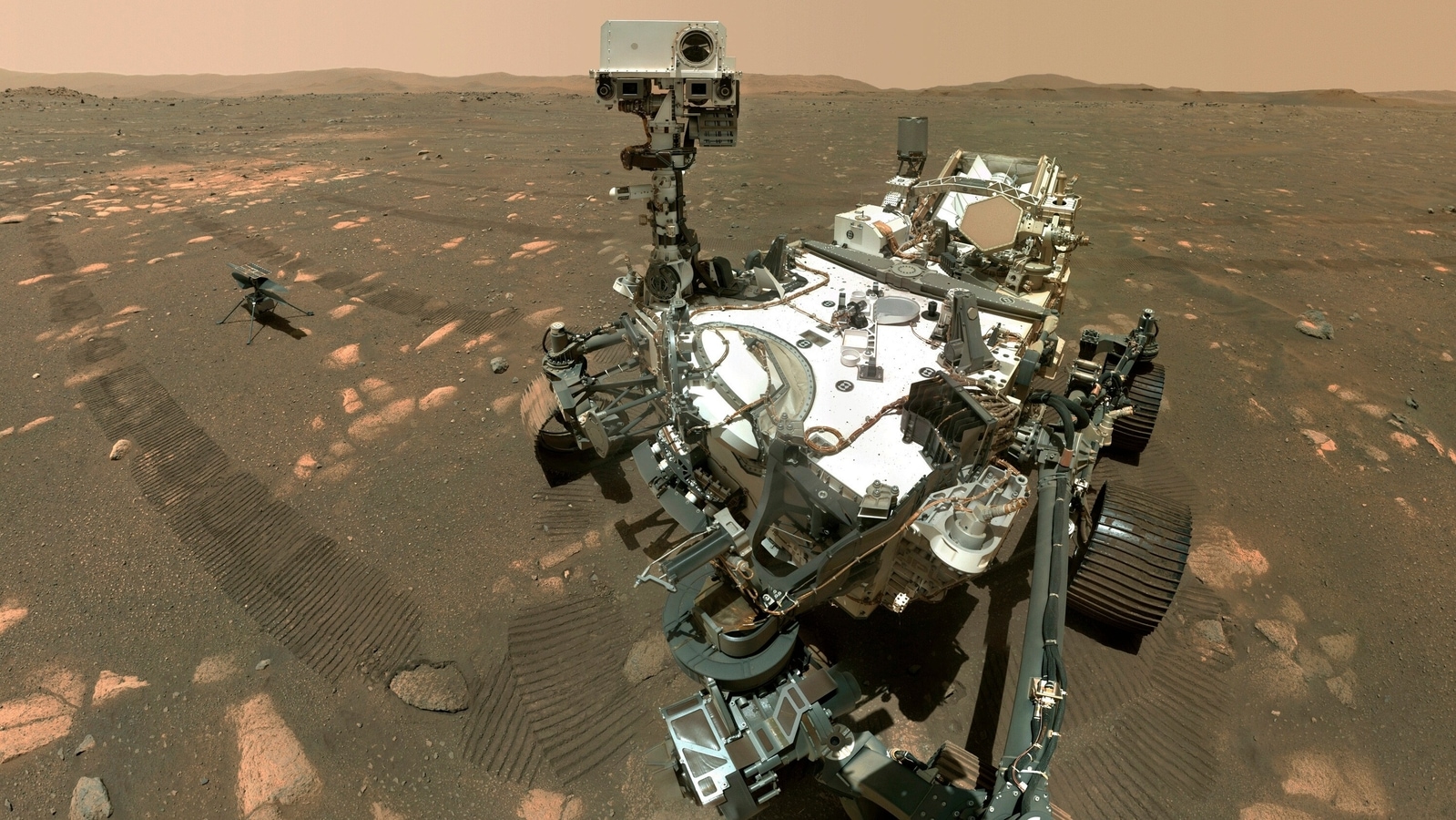Mars rover needs help for its rock study, NASA comes up with genius solution
The Perseverance Mars rover mission is depending on help from scientists on Earth with a clever research solution.

Back in August 2021, NASA's Perseverance Mars rover collected sample of rock as part of its mission to be sent back to Earth later. However, the sample tube was empty as NASA later discovered that the rock they chose was so crumbly that it was pulverised by the rover's drill itself. The rock collected by the rover was almost the size of a chalk, and was called Roubion. NASA did not leave it and while the Mars rover carries on with its mission, scientists at NASA JPL want to find answers behind it.
Hence, the scientists on Earth started a new campaign that will duplicate the conditions the Perseverance rover faced at the time. In order to simulate the conditions, they had to re-create the Roubion sample on Earth and they were asked to find it in the Santa Margarita Ecological Reserve, which was only a 2-hour drive from the JPL headquarters.
NASA tries to simulate Mars on Earth
The NASA team was looking for rocks that was weathered like Roubion but not fragile enough break at the slightest of touch. “Of the rocks we've seen, Roubion had the most evidence of interaction with water,” said Ken Farley of Caltech, Perseverance's project scientist. “That's why it fell apart.”
“It was very physical work,” said JPL's Louise Jandura, chief engineer for sampling and caching, leading the test campaign. “We were chipping away with rock hammers and crowbars. A couple rocks were big enough that it took all five of us holding on to a stretched-out canvas to get it into the bed of our truck.”
Once they collected the sample, they took it to JPL's Extra-terrestrial Material Simulation Lab to begin their experiment.
NASA says that Jandura's team ran their flight-like drill a few millimeters at a time, constantly checking if the core was still forming. If the rock had crumbled, they would look for variables that might have caused it. Engineers have been constantly adjusting the way they use the drill on the rock to gather more data.
For every adjustment the team made, a new wrinkle would emerge. “One was that fragile samples can still resist the percussive drill. When Jandura's team reduced the force of percussion to avoid powderising the sample, the drill bit couldn't penetrate the surface. But choosing a spot that holds up to stronger percussion means choosing one that likely interacted less with water,” says NASA.
Have they found the answers? Not yet. But when the results emerge, the Perseverance rover, which has so far collected six samples from similar weathered rocks on the Martian surface, can gain a lot of help to carry on with its mission of sample collection.
Catch all the Latest Tech News, Mobile News, Laptop News, Gaming news, Wearables News , How To News, also keep up with us on Whatsapp channel,Twitter, Facebook, Google News, and Instagram. For our latest videos, subscribe to our YouTube channel.





























